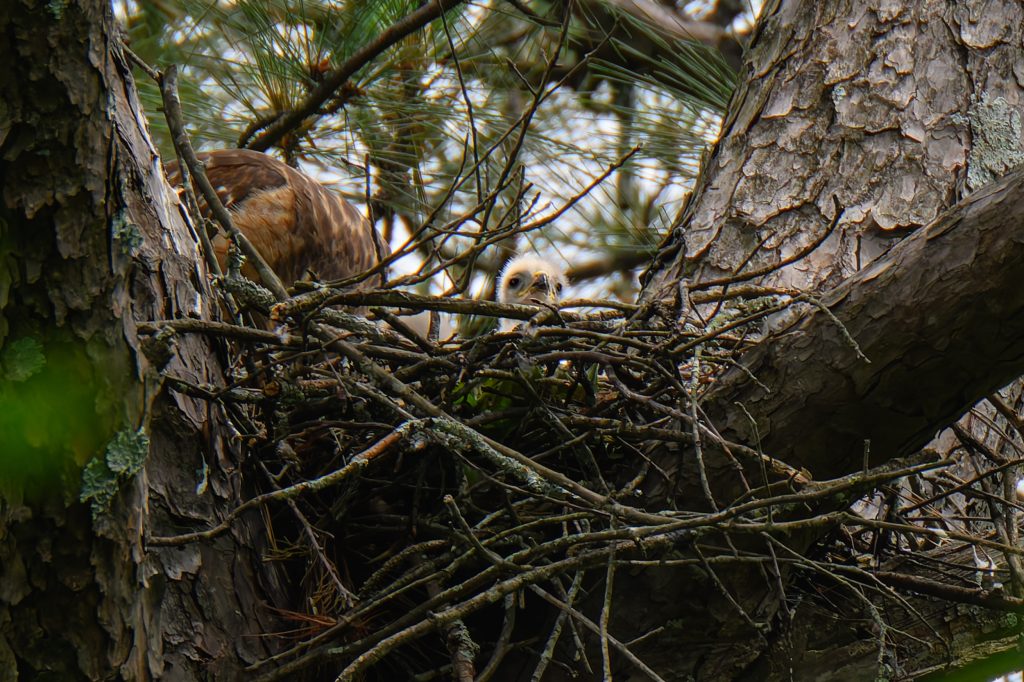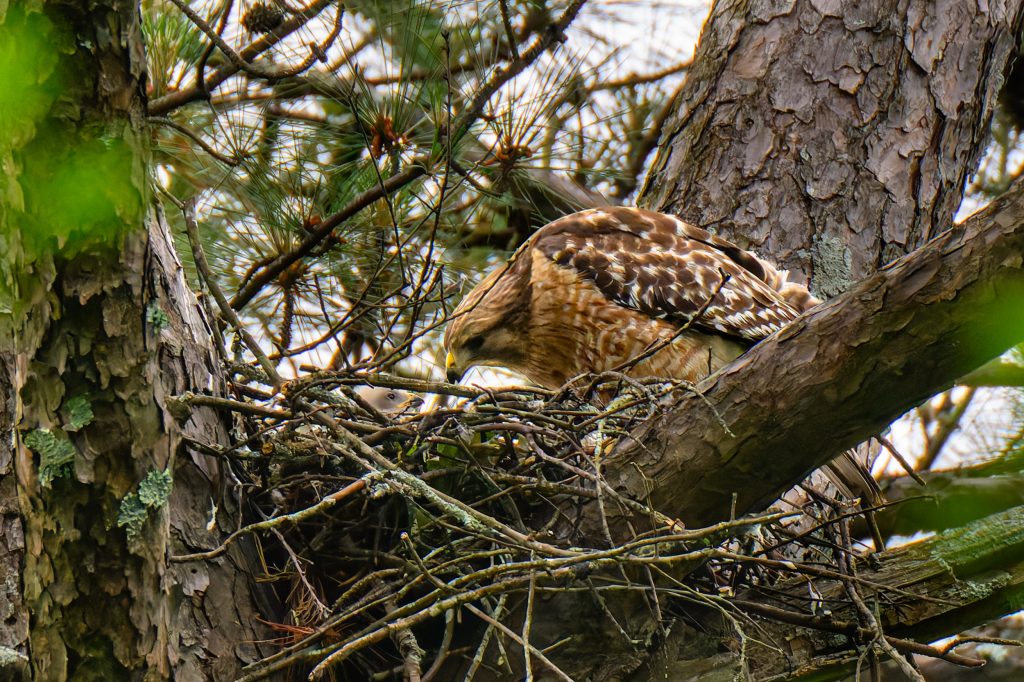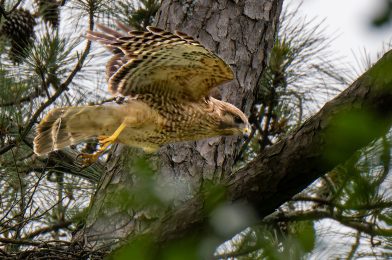Renowned photographer Henri Cartier-Bresson once said, “The Decisive Moment is the simultaneous recognition, in a fraction of a second, of the significance of an event as well as of a precise organization of forms which give that event its proper expression.” Today, I experienced the truth of these words firsthand.
For months, I’ve been documenting the lives of a pair of Red-Shouldered Hawks that have made a nest in my backyard. From the early stages of nest-building to the arrival of eggs, I’ve been there, camera in hand, eager to capture every moment of this remarkable journey.

Red-shouldered hawk nests are marvels of nature, typically nestled in the crook of a large tree’s main trunk, high above the ground. Constructed with care and precision, these nests serve as the sanctuary for the hawk couple’s offspring, providing warmth, shelter, and security.
As a photographer, capturing the essence of this experience posed a unique challenge. Positioned on the ground, my view of the nest was limited, making it impossible to see the eggs or the newly hatched eyasses. But today, after months of patience and anticipation, I finally witnessed one of the central moments I longed for – the first glimpse of the baby hawks.

The magic happened during feeding time, a brief window of opportunity when the chicks were visible, nestled alongside their parents. It was a moment of pure wonder and delight, a scene that epitomized nature’s beauty and resilience.
Reflecting on this experience, I couldn’t help but draw parallels to my years of photographing sports. Much like in sports photography, capturing the decisive moment in wildlife photography requires patience, anticipation, and quick reflexes.
In sports, the action moments are fleeting, often occurring in the blink of an eye. The same is true for wildlife photography, where the perfect shot may last only a fraction of a second. But those moments can be captured and immortalized forever with practice and perseverance.

One of the key lessons I’ve learned over the years is the importance of overshooting. By taking more photos than necessary, I increase my chances of capturing the decisive moment. This strategy requires discipline and discernment but ultimately leads to more impactful and memorable images.
For those looking to improve their photography skills, I offer a few tips:
- Put in the time: Arrive early and stay late. The best shots often happen when you least expect them.
- Anticipate the moments: Study your subjects’ behavior and learn to anticipate when the decisive moments will occur.
- Overshoot: Don’t be afraid to take more photos than you think you need. In post-production, you can always narrow your selection to the best shots.
- Refine your technique: Improve your shooting angles, camera settings, and composition. The more you practice, the better you’ll capture the decisive moment.

Ultimately, photography is more than just taking pictures—it’s about telling a story, capturing a moment, and sharing it with the world. Today, as I look back on the photos of those precious baby hawks, I’m reminded again of the power and beauty of the decisive moment.

